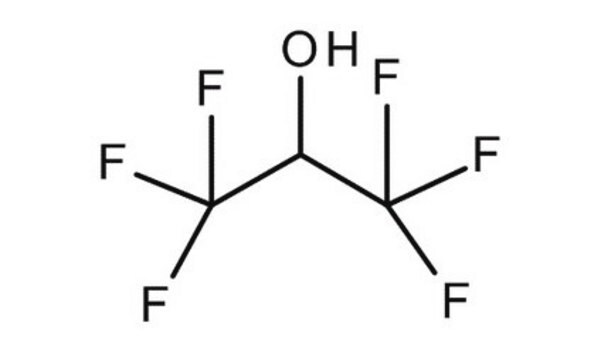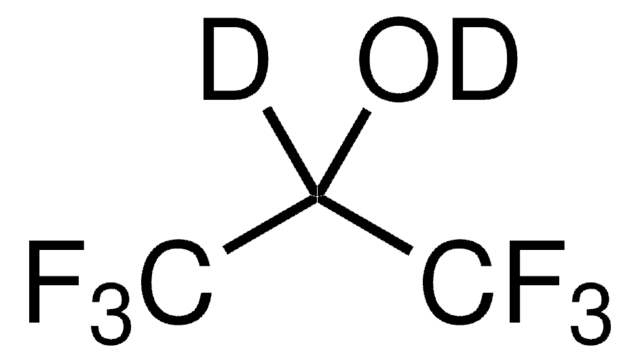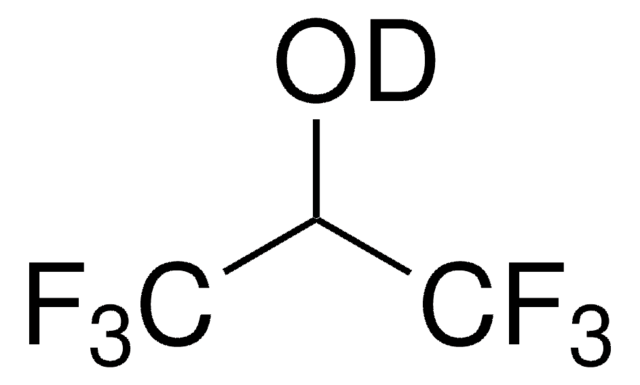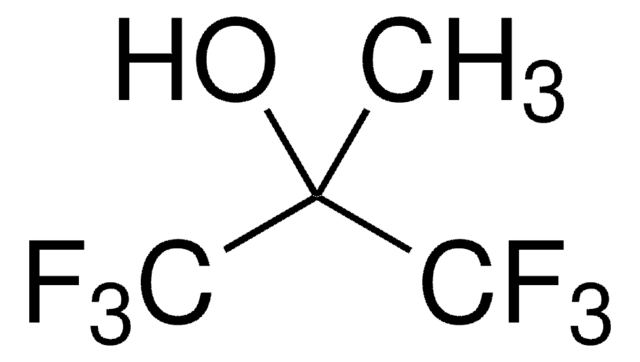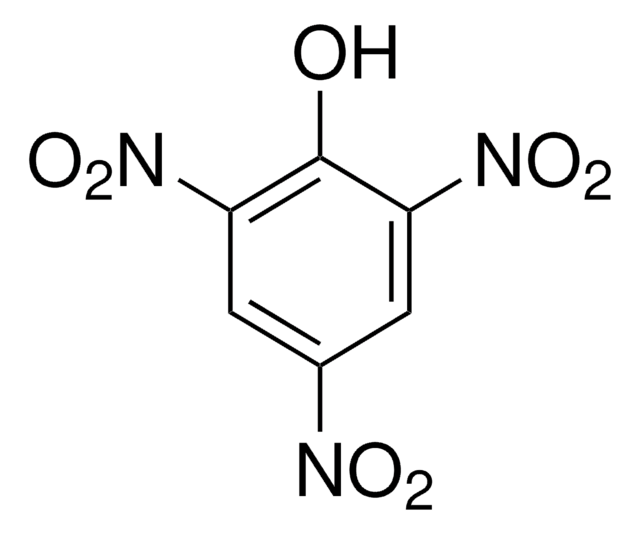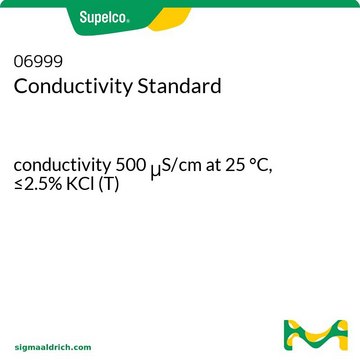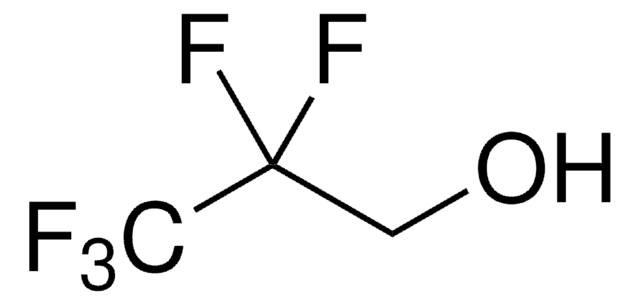52517
1,1,1,3,3,3-esafluoro-2-propanolo
for GC derivatization, LiChropur™, ≥99.8%
Sinonimo/i:
HFP, esafluoro-iso-propanolo
About This Item
Prodotti consigliati
Grado
for GC derivatization
Livello qualitativo
Saggio
≥99.8% (GC)
≥99.8%
Qualità
LiChropur™
Impiego in reazioni chimiche
reagent type: derivatization reagent
reaction type: Acylations
reagent type: derivatization reagent
reaction type: Esterifications
tecniche
gas chromatography (GC): suitable
Indice di rifrazione
n20/D 1.275 (lit.)
P. ebollizione
59 °C (lit.)
Punto di fusione
−4 °C (lit.)
Densità
1.596 g/mL at 25 °C (lit.)
Stringa SMILE
OC(C(F)(F)F)C(F)(F)F
InChI
1S/C3H2F6O/c4-2(5,6)1(10)3(7,8)9/h1,10H
BYEAHWXPCBROCE-UHFFFAOYSA-N
Cerchi prodotti simili? Visita Guida al confronto tra prodotti
Descrizione generale
Applicazioni
Altre note
Note legali
Avvertenze
Danger
Indicazioni di pericolo
Classi di pericolo
Eye Dam. 1 - Repr. 2 - Skin Corr. 1A - STOT RE 2
Codice della classe di stoccaggio
8A - Combustible corrosive hazardous materials
Classe di pericolosità dell'acqua (WGK)
WGK 2
Punto d’infiammabilità (°F)
No data available
Punto d’infiammabilità (°C)
No data available
Dispositivi di protezione individuale
Faceshields, Gloves, Goggles
Scegli una delle versioni più recenti:
Possiedi già questo prodotto?
I documenti relativi ai prodotti acquistati recentemente sono disponibili nell’Archivio dei documenti.
I clienti hanno visto anche
Il team dei nostri ricercatori vanta grande esperienza in tutte le aree della ricerca quali Life Science, scienza dei materiali, sintesi chimica, cromatografia, discipline analitiche, ecc..
Contatta l'Assistenza Tecnica.
